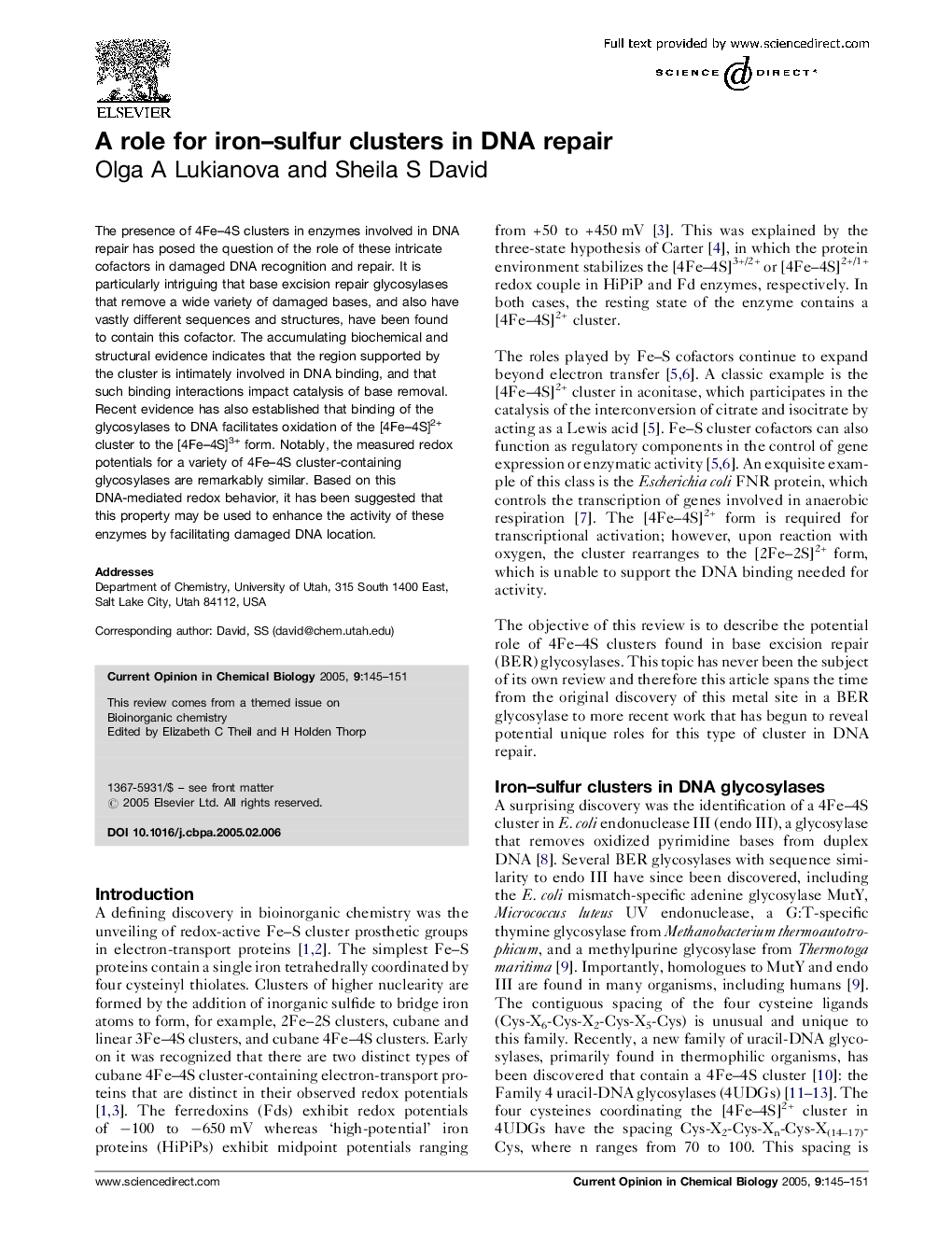| Article ID | Journal | Published Year | Pages | File Type |
|---|---|---|---|---|
| 10565229 | Current Opinion in Chemical Biology | 2005 | 7 Pages |
Abstract
The presence of 4Fe-4S clusters in enzymes involved in DNA repair has posed the question of the role of these intricate cofactors in damaged DNA recognition and repair. It is particularly intriguing that base excision repair glycosylases that remove a wide variety of damaged bases, and also have vastly different sequences and structures, have been found to contain this cofactor. The accumulating biochemical and structural evidence indicates that the region supported by the cluster is intimately involved in DNA binding, and that such binding interactions impact catalysis of base removal. Recent evidence has also established that binding of the glycosylases to DNA facilitates oxidation of the [4Fe-4S]2+ cluster to the [4Fe-4S]3+ form. Notably, the measured redox potentials for a variety of 4Fe-4S cluster-containing glycosylases are remarkably similar. Based on this DNA-mediated redox behavior, it has been suggested that this property may be used to enhance the activity of these enzymes by facilitating damaged DNA location.
Related Topics
Physical Sciences and Engineering
Chemistry
Chemistry (General)
Authors
Olga A Lukianova, Sheila S David,
